Spinal disease is younger every year.One of the most common osteochondrosis, which has recently been considered an exclusive age-related disease.If it affects the cervical spine, severe pain in the neck, arms and head can occur, significantly reducing the quality of life.This is often accompanied by several other disorders and, if left untreated, leads to the formation of intervertebral hernia, a large number of surgical intervention.Therefore, it is important to diagnose cervical osteochondrosis as early as possible and begin treatment according to the condition.

Symptoms of cervical spinal osteochondrosis
Cervical spinal osteochondrosis is a disease in which degenerative changes occur in the intervertebral disc.Initially, the disc, which is a cartilagin ring containing content such as jelly, becomes dehydration.This is most often due to an inactive lifestyle, prolonged work on computers, poor posture, neck injury and several other factors.
This leads to a decrease in the strength of collagen fibers that form an annular fibrosus disc.As a result, the thickness gradually decreases, which is the main cause of the development of symptoms of cervical osteochondrosis:
- neck pain from various levels of intensity;
- Headache, dizziness, loss of consciousness caused by infringement of the cervical vertebral artery through the vertebra, the development of vertebral artery syndrome;
- fluctuations in blood pressure levels;
- Radicular syndrome, caused by pinching the spinal cord, accompanied by irradiation of pain from the neck to the arm, up to the hands and fingers, to the head, shoulders, sensory disorders in this area, appearance of goosebumps, numbness, and more;
- decreases in various neck movements, appearance or intensification of pain when performing certain movements;
- increased fatigue, decreased performance;
- Tinnitus, lowering visual acuity, the development of ENT pathology is difficult to treat.
There are 7 vertebrae in the cervical spine.Often, osteochondrosis affects the disc located between the 5th and the 6th, as well as the 6th and 7th vertebraes.
In such situations, you should contact a neurologist, who prescribes MRI.The results of this examination make it possible to accurately identify osteochondrosis anywhere, even the earliest stage of development, and select treatment.
Stage of development
In general, there are 4 stages of development of osteochondrosis:
- Grade 1 - pathological changes only begin to appear in the intervertebral disc, so the symptoms are mild and observed only from time to time.In such situations, the treatment will be effective and easy.
- The 2nd degree - the change in the disc becomes more prominent, leading to the appearance of pain in the neck, which occurs and increases during head movements.
- Grade 3 - The pain becomes almost constant and can be complicated by the development of vertebral artery syndrome, as well as the formation of hernia and intervertebral hernia.
- The 4th degree - the disc is so destroyed that the possibility of movement in the affected spine motion segment is almost completely excluded.In this case, severe pain is observed, radicular syndrome often develops, and one or both of the vertebral arteries are pinched, leading to the appearance of characteristic symptoms.
Treatment of cervical osteochondrosis
Therefore, treatment tactics for cervical osteochondrosis depend on the severity of degenerative changes in the intervertebral disc, the patient's age and its individual features.Therefore, it is constantly developed separately for each patient, but is always intended to solve the following problems:
- The elimination of unpleasant symptoms that exacerbate the quality of life of the patient;
- improve the quality of blood circulation in the neck;
- increased metabolic processes in affected areas;
- eliminating the cause of degenerative-dystrophic changes in the intervertebral disc;
- Reduces the risk of developing complications of osteochondrosis, namely protrusions, intervertebral hernia, spondylosis, etc.
In general, at each stage of the development of the disease, the use of different therapeutic measures is indicated.If in the first stage it is sufficient to adjust your lifestyle and engage in exercise therapy, then in the 2nd stage, a broader effect will be needed, supplement including taking some medications, conducting manual therapy sessions, using orthopedic devices, etc.
But patients must understand that it is impossible to achieve the reverse regression of degenerative-dystrophic changes, especially if level 2 or more osteochondrosis is diagnosed.In such situations, treatment will aim to improve the well -being of the patient and stop the development of the disease.Sometimes it is possible to correct the condition only at the level of osteochondrosis 1, but at the developmental stage of this pathology is diagnosed very rarely, as the patient feels small discomfort in the neck only as a sign of fatigue and does not consult a doctor.
In worse cases, the treatment of cervical spinal osteochondrosis will become more complex and long.However, it is carried out under the supervision of neurologists with regular follow -up examinations and therapy adjustments depend on changes in the well -being of the patient.
Lifestyle correction
All patients diagnosed with cervical osteochondrosis are advised to make certain changes to their lifestyle.In each case, these suggestions vary depending on the characteristics of one's professional activities and some others.
The majority are advised to increase their physical activity level and rest from work at least every hour to heat if they involve sitting.In cases where the patient is actively involved in sports, it is recommended that he reduce the burden on the cervical spine.Therefore, it will be shown to stop running, jumping sports, weight lifting, and wrestling.
Overweight people are also recommended to take steps to reduce it, as well as adjust their diet.When osteochondrosis has occurred, it is important that the diet meets the daily needs of the body as soon as possible.Therefore, it is worth giving up fast food and half -finished products and bringing your diet more rational.This means it is worth creating a menu so that half of the diet is made up of vegetables and fruits, and it also contains sufficient amounts of protein.
Treatment of cervical osteochondrosis
Drug therapy is primarily aimed at eliminating the symptoms of cervical spinal osteochondrosis.As a rule, it is complex and includes the use of drugs from different groups, each solving certain problems.Therefore, it is also developed separately for each patient.
Nsaids
Nonsteroid or NSAID anti-inflammatory drugs are a large group of drugs that not only have anti-inflammatory properties but also analgesics.They are available in a variety of doses, including tablets, capsules, ointments, gels and creams, and solutions for intramuscular administration.NSAIDs should only be used when requested, that is, when severe neck pain occurs.
For severe pain, NSAIDs can be given intramuscularly.
The disadvantages of oral drugs from the NSAID group are their annoying effects on the mucous membranes of the stomach and duodenum.This can cause problems with these organs, especially gastritis and peptic ulcer.To reduce such risk, proton pump inhibitors are set in combination with them.
There are medications that have a softer effect on the gastrointestinal tract, which is widely prescribed to relieve pain and inflammation in osteochondrosis.Also, advanced medicines have been developed, characterized by selective effects, which are also often prescribed for osteochondrosis, but they are more expensive and are not available to all patients.
Corticosteroids and injections (blockade)
Corticosteroids are hormone drugs prescribed to patients with severe inflammation.They can cause some unwanted consequences with long -term use, so they are prescribed in short courses in the most difficult cases.As a rule, the use of injection solutions is indicated, as with this administration method these drugs are easier to tolerate the body and are less likely to cause side effects.
Corticosteroids are often used in combination with local anesthetics when performing blockade, which quickly relieves severe pain by introducing a mixture provided into a special point near the spinal cord.This procedure requires certain skills and agility, and therefore can only be done at medical institutions by trained medical workers.Otherwise, the possibility of developing unwanted consequences and complications is very high.
It is recommended to do blockade no more than 4 times a year.
Muscle relaxants
Muscle relaxants are a group of drugs used to eliminate reflex muscle cramps caused by acute inflammation.This is often the case with cervical osteochondrosis and causes severe pain in the neck, which further worsens the condition.
Vitamin
Because osteochondrosis creates a significant prerequisite for compression of the spinal cord, it is often shown to take vitamin B complexes mainly.They are directly involved in the transmission of nerve impulses, which is very important in the development of radicular syndrome.
Chondroprotectors
Chondroprotectors are medicines where many controversies.They are based on the material used by the body to restore damaged cartilage tissue, which determines the signs of its use in cervical osteochondrosis.But at the same time, there is no convincing evidence of its effectiveness in the form of advanced disease.In the early stages of osteochondrosis, they actually had a positive effect on the condition of the intervertebral disc, leading to an increase in the well -being of the patient.And in the future, they can only help prevent further development of degenerative changes in the intervertebral disc.
Chondroprotectors are produced in the form of powder for the preparation of solutions, capsules, products for topical use, as well as solutions for intramuscular administration.The greatest positive effect is seen from the last.
Topical products
This is exactly the medicine, which is found in the form of gels, creams or ointments, that patients often start using when signs of cervical osteochondrosis appear.They have different effects, including anti-inflammatory, analgesic, heating or, on the other hand, cooling, and local irritants.
Often these products contain NSAIDs, so they help reduce pain, but are especially effective in the early stages of osteochondrosis.Also, the drug components can be bulbs, hot pepper extract, snakes or bees.
Local receipts act on the principle of irritating skin nerve endings, where there is a decrease in pain and increased blood flow in the application area.But such medicines are only effective in the early stages of the development of cervical osteochondrosis.
Preparation to improve micro -circulation
Drugs in this group are used to improve the quality of blood circulation, which is essential for vertebral artery syndrome.Some drugs have vasodilating effects, which improves brain nutrition and helps eliminate tinnitus, headache, and dizziness.But without eliminating the factors that put pressure on the vertebral artery, such treatment will only provide temporary results.
Exercise therapy
Physical therapy is the basis for the treatment of cervical spinal osteochondrosis.Today, there are many methods of proprietary and general training therapy received for cervical osteochondrosis, but patients should understand that there is no universal training.A set of exercises must be selected by the experts individually, taking into account not only the developmental stage of degenerative-dystrophic changes, but also the patient's age, the nature of the existing disease, the presence of radical syndrome or the vertebral artery compression.Therefore, different exercises can be shown to the same patient as the same changes in the intervertebral disc.
In general, physical therapy has the following goals:
- strengthen the neck muscles and upper shoulder straps;
- activation of blood circulation in the affected area, which will contribute to the recovery of the intervertebral discs;
- Normalization of muscle tone.
It needs to do exercise therapy daily.Initially, it is best to attend special groups or work with individual training therapy teachers.This will allow you to 100% master the techniques of doing each proposed exercise so that its implementation brings maximum benefits.Experts will help you choose the optimal load and develop programs to improve it, taking into account the physical development of the patient.
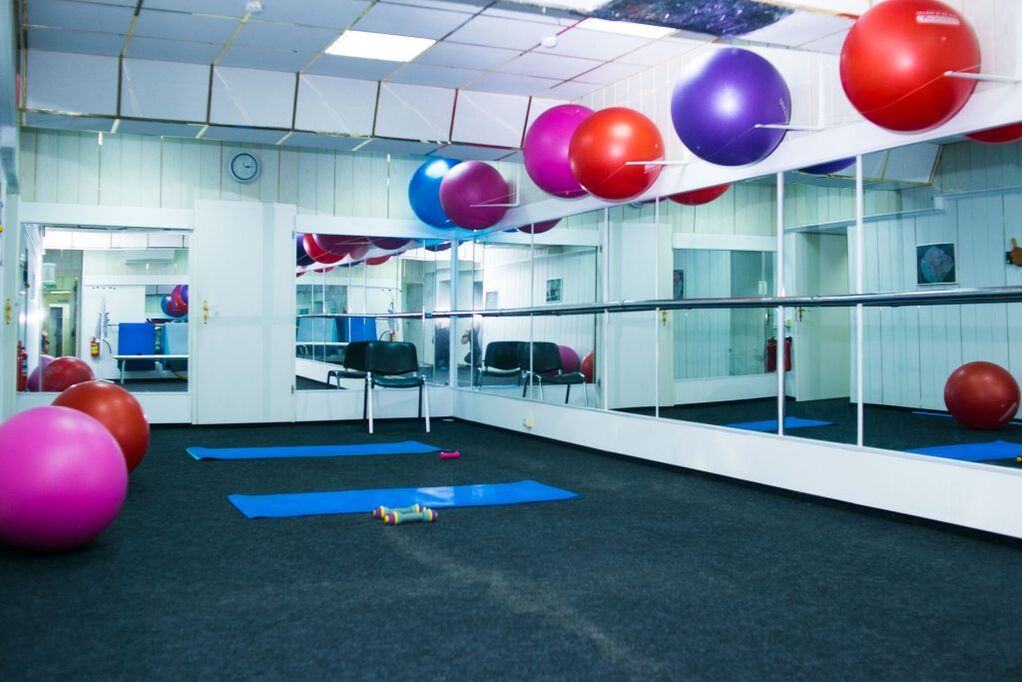
In the future, patients may practice free exercise therapy at home.At the same time, it is important to approach this with full responsibility, to carry out the training slowly, without a rush and in a comfortable state.But if pain arises at any time during training, you should immediately stop doing the training that causes your appearance and consult your doctor to determine the causes and correct the training therapy program for cervical osteochondrosis.
When performing exercise therapy, it is forbidden to make movements that are sudden, strong, turn your head, or exercise through pain.In such situations, there is a high risk of aggravating the changes in the disc rather than the expected benefits.
Swimming has a very positive effect on the spinal state.This is right -a type of sport that does not involve pressure on the disc, but is actively involved in the back and neck muscles.As a result, the muscle corset is effectively strengthened, acting as a natural support for the spine.Therefore, if possible, patients are advised to visit the pool 2-3 times a week.
Manual therapy for cervical osteochondrosis
Manual therapy is one of the most effective ways to treat cervical osteochondrosis, as it allows you to affect not only the muscles and soft tissues, but also the spine itself.But it is very important to take the approach responsible for choosing the chiropractor, as the wrong or too strong influence can cause the condition of the patient's condition and even the development of complications.Such experts not only have higher medical education and licenses to practice manual therapy, but also have a good understanding of the features of anatomy and osteochondrosis, and have sufficient experience.
Do not confuse manual therapy and therapeutic massage.The difference between these types of manual therapy is important, as therapeutic massage involves only soft tissue, while during the doctor's manual therapy also works on the spine.
Therefore, each manual therapy session begins by wiping, which allows you to prepare the skin for a more active effect.In the future, rubbing, kneading and squeezing techniques is used, which allows you to activate blood flow to the collar, neck and upper back.Once the skin and muscles are warm enough and the patient is relaxing, the doctor begins to perform mobilization and manipulation techniques.They imply the implementation of turn with swinging movements, pushing towards the most significant movement restrictions, leading to increased spinal mobility and functional block removal.
Therefore, thanks to qualified manual therapy, it is possible to:
- normalize the position of the vertebra, thus eliminating the increased pressure on the intervertebral disc and creates a good condition for their recovery;
- eliminate pain caused by cervical osteochondrosis and its complications;
- Bring too relaxing muscles to normal tones and relaxing spasmodic muscles;
- increase neck mobility;
- eliminate pressure on the vertebral artery and thus normalize blood flow to the brain;
- Eliminates compression of the spinal cord and thus normalizes the flow of bioelectric impulses to these organs for the preservation they are responsible for, and reduce pain.
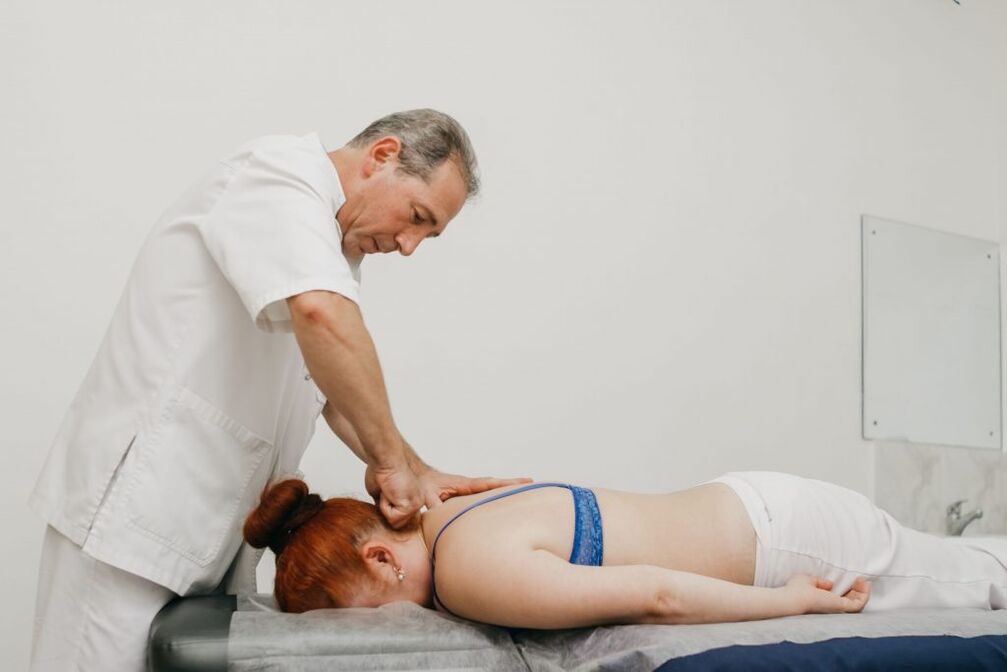
It is worth highlighting the author's manual therapy method.It involves the use of special and patented effect techniques, which allows for significant results after the first session, not only in the neck affected by osteochondrosis, but also throughout the body.As a result, not only the pain and other symptoms of the disease disappear, but also the function of all organs improved, and the immune system was strengthened.The second session and subsequently enhance the positive effects and consolidate it, which guarantees that if other medical recommendations are followed, the remission period will last as long as possible.
Self -reflection
To improve their well -being, patients can periodically perform the neck massage to relieve fatigue and reduce pain.To do this, sit in a comfortable position and try to loosen your neck muscles.Then make a wiping movement with the palm of the hand, gradually moving to a round scrub, catching the shoulder area.All movements are made from the spine without the pressure that arrives and strongly.In this case, you can use local anti-inflammatory drugs recommended by your doctor.
Physiotherapy treatment
Physiotherapy is shown beyond the acute inflammation process.It allows you to consolidate the results of the treatment and improve the patient's condition.As a rule, the course 10-15 procedures are prescribed, selected separately for each patient.Maybe:
- Electrophoresis - involves the use of electrical current to ensure a deeper penetration of the drugs indicated.
- Magnetotherapy - helps activate blood circulation in the area of influence and stimulate the metabolic process.In addition, magnetic therapy sessions have analgesic effects and help eliminate swelling.
- Laser therapy has anti-inflammatory effects, vasodilating, which leads to a decrease in pain.
- Ultrasound therapy is a physiotherapy method based on the positive effects of ultrasonic waves on the body.They help reduce the sensitivity of nerve endings and also have anti-inflammatory and analgesic effects.
- Diadynamic current - the procedure leads to pain reduction, improves tissue nutrition, has a positive effect on the muscles and helps eliminate inflammation.
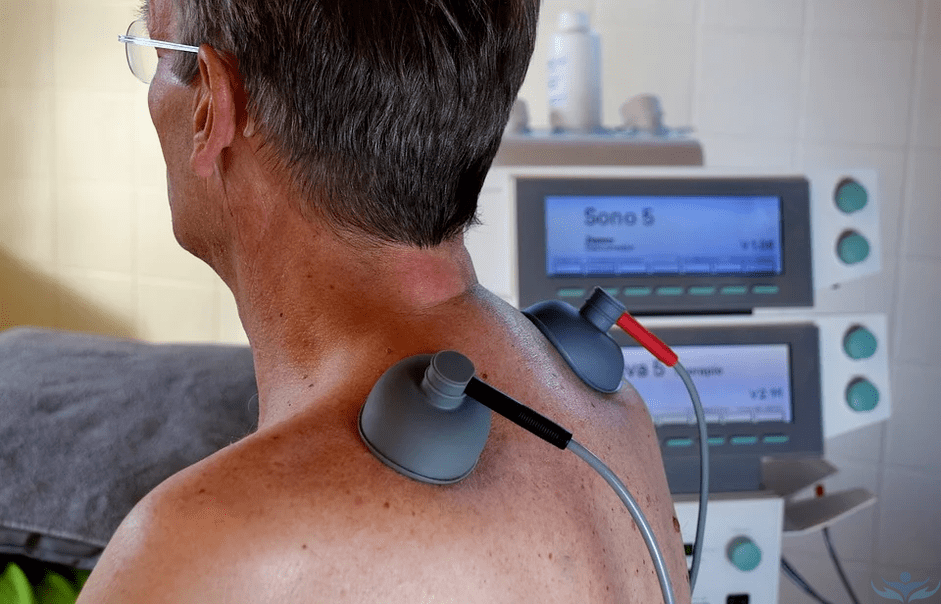
Traction therapy
When the vertebra comes together because of the intersection of the intervertebral disc, the traction therapy using the Glisson loop is indicated.The essence of this method is to use the tensile load that is properly adjusted to the cervical spine using a special device that fixes the head and has a load across.Such procedures help increase the distance between the vertebrae, leading to a decrease in pressure on the disc and create a good condition for their recovery.But such therapy can only be prescribed by a doctor.
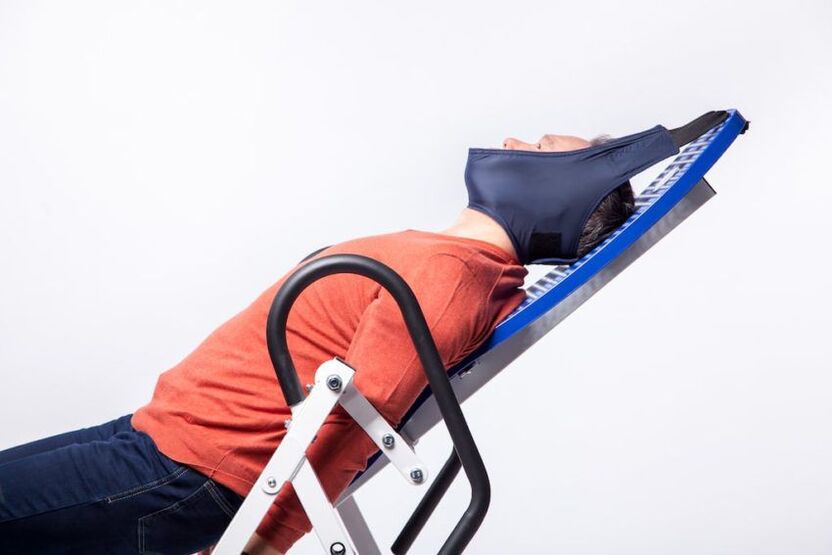
Needle applicator
Iplicator is a simple and affordable reflexology method in the neck area.This can be a plate with a spikes that should be placed under the neck, or the same device, but in the form of a roller.Thanks to thorns, skin receptors are irritated, leading to more active blood flow to the affected area.
Some patients recorded a decline in neck pain after using the applicator, as well as improving performance, improving sleep quality and recovery of neck mobility.But if you have skin lesions in the affected area or vascular disease, you cannot use needle applicator.
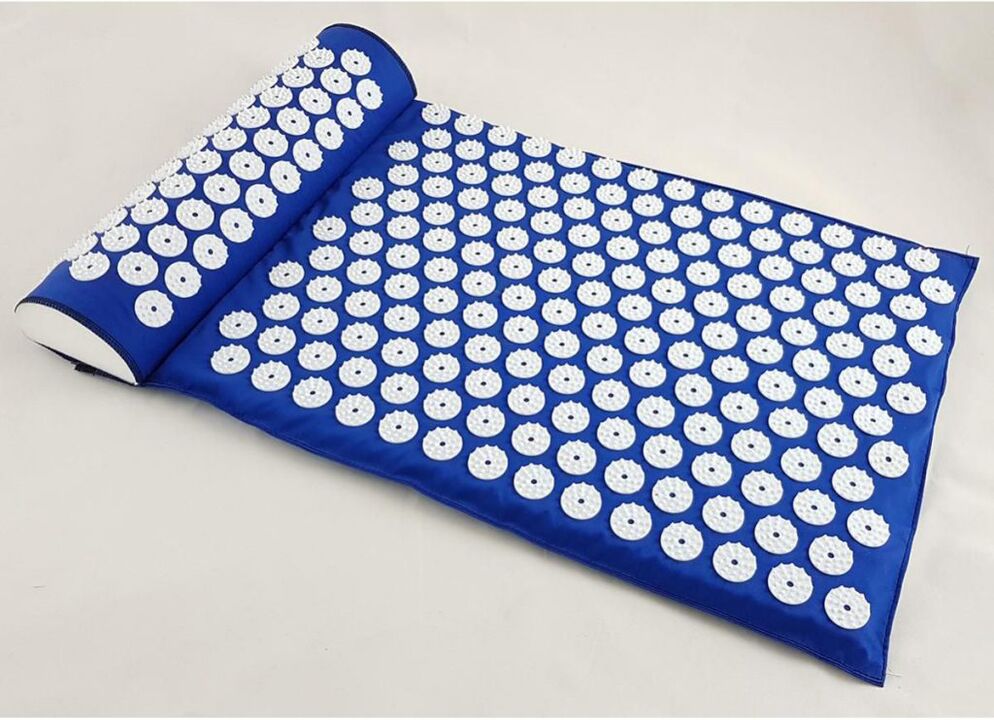
An orthopedic device
To reduce the load on the cervical spine, it is recommended to convert mattresses and pillows to orthopedics, as sleeping on uncomfortable pillows causes additional compression of the vertebral artery and nerve stem during sleep.Orthopedic products are free from these weaknesses and ensure the proper maintenance of the physiological position of the spine throughout the entire length and thus reduces existing osteochondrosis development levels.
But it is important to choose the right pillows and mattresses so that they match the individual characteristics of the patient and contain the appropriate filling.Thanks to them, it is also possible to improve the quality of sleep and wake up in a cheerful and relaxing morning.
Also, some patients are recommended to wear shants collar.It is a removable orthopedic device that allows you to fix your neck and reduce the burden on the cervical spine, for example, while working on a computer or after injury.The collar is placed before the expected load on the neck, but must be removed during sleep and rest.They differ in design, height, setting levels, so only the attending physician can choose the optimal one.
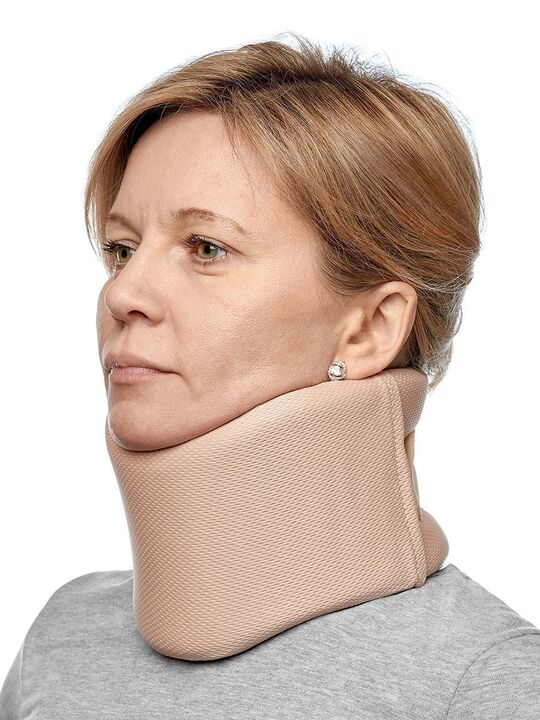
Therefore, the treatment of cervical osteochondrosis can be quite long and complex.You should be prepared for this, as there is no other way to stop the development of changes in the intervertebral disc, avoiding the development of complications and the need for surgery.But in most cases, the patient's condition improved during the first week of treatment.At the same time, it is important not to treat yourself, but to contact a neurologist, as only a qualified specialist will be able to determine the level of osteochondrosis and choose the most appropriate treatment for this disease for a particular patient.

















































